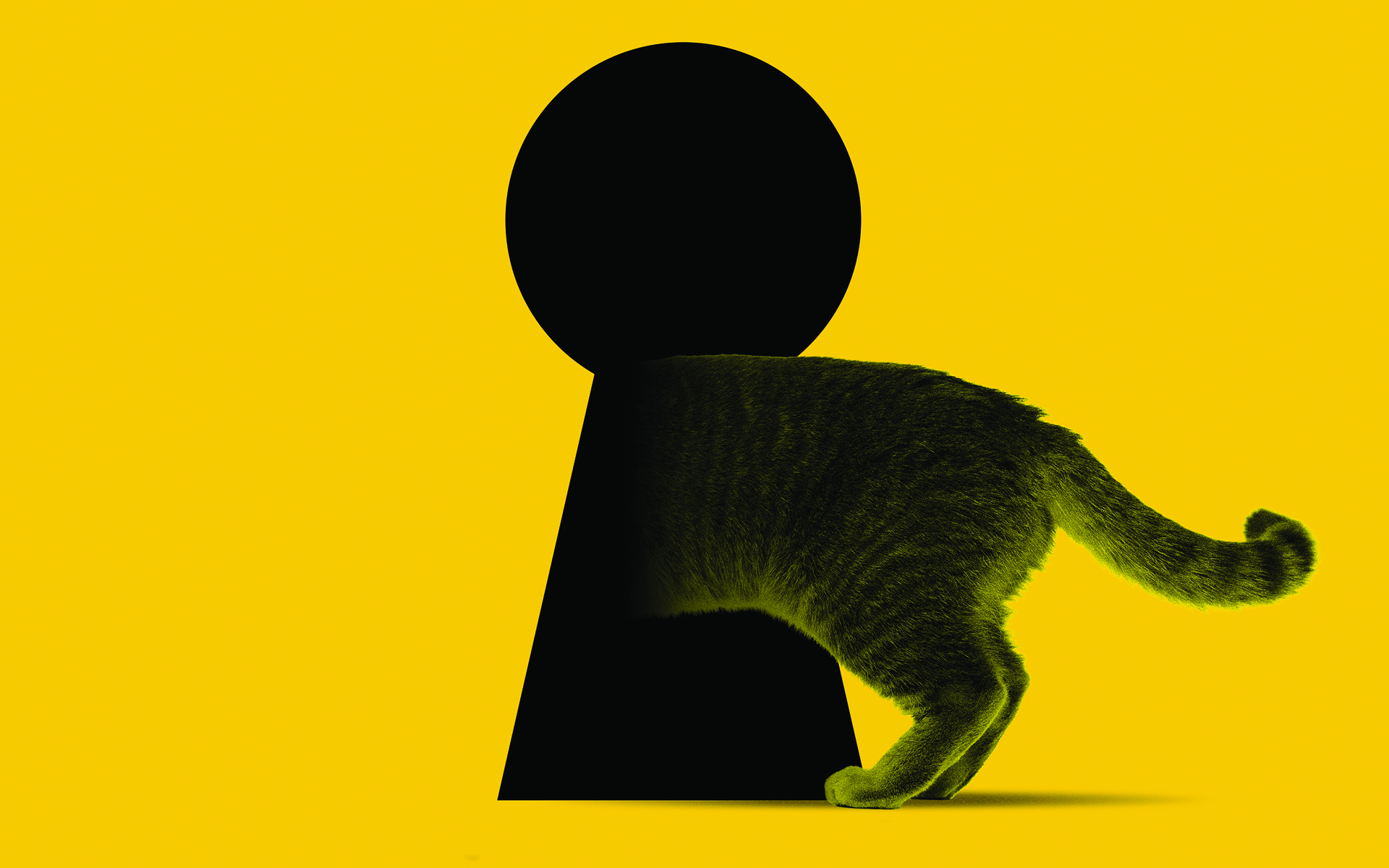Anna Lembke’s gateway drug was Twilight, the young-adult vampire-romance novel. “I was at my kids’ elementary school and heard a bunch of moms talking about it, and one of them was saying she couldn’t
put it down,” Lembke recalls. “I thought, gosh, that sounds good! And it was true: It totally transported me. It was just the right drug at the right moment.”
The Stanford University psychiatrist was so enthralled by that first sweet hit that she went on to reread Twilight four more times, always trying, in vain, to replicate the high. In the meantime, she devoured every other vampire bodice-ripper she could find, soon moving on to erotic novels involving werewolves, fairies, witches, time travelers, soothsayers, and mind-readers.
Undeterred by tortured syntax, worn-out plot devices, stock characters, or typos, Lembke read instead of cooking, sleeping, socializing, or spending time with her husband and kids. It took a full year for her to hit bottom, catching herself awake at 2 a.m. on a weekday, reading Fifty Shades of Grey.
Of course Lembke should have known better. Her day job, as chief of Stanford’s Addiction Medicine Dual Diagnosis Clinic, is all about helping other people cope with self-destructive cravings. Yet her journey down the kinky-lit rabbit hole provides the wry compassion that informs her book, Dopamine Nation: Finding Balance in the Age of Indulgence. The question at its heart is custom-made for our restless, anxious era, namely: How can we find contentment in an age of instant gratification?
Addiction Is Everywhere
Craving, addiction, and the damage they do are all around us these days—in stark relief to the purported universal ideal of a lasting sense of balance, satisfaction, and ease. Nearly four in ten Americans say they’ve eaten too much or consumed unhealthy foods in the past month because of stress. Overall, more than three in ten premature American deaths are due to behaviors supposedly within our control, such as excessive drinking, smoking, and physical inactivity. “If you ever had enough money, sex, drugs, rock ‘n’ roll, power, possessions, could you recognize it?” asks a bumper sticker on a car in my neighborhood. Dopamine Nation suggests many of us couldn’t.
Dopamine is a neurotransmitter—a chemical messenger in the brain—that has been hyped so much in recent years that some people sport tattoos of its chemical signature. It’s important to note that scientists agree that no single neurotransmitter is responsible for an emotion. Human behavior is vastly more complicated than our yearning for simplicity would have it, and indeed, both Lembke and even the psychiatrist Daniel Z. Lieberman, co-author of the extravagantly titled The Molecule of More: How a Single Chemical in Your Brain Drives Love, Sex, and Creativity—and Will Determine the Fate of the Human Race, acknowledge their books over- simplify science to make their arguments. There has also been lots of confusion about dopamine, which for years was falsely portrayed as “the pleasure molecule.” Scientists who study dopamine say it’s more about wanting than liking: It appears to play a key role in unleashing motivation, getting us out of bed and out the door to look for food and mates.
All this would suggest that dopamine makes the world go round. Yet by many accounts, it is also the root of much evil. Dopamine, says Lembke, helps explain why we so often yearn for that second piece of chocolate the instant we’ve swallowed the first. The first bite releases a surge of the chemical in our brains, but because our brains tend toward homeostasis, we almost immediately afterward feel a deficit, which manifests as the sensation of craving.
The more we chase pleasure, the more we invite its opposite. That’s an old lesson from the Stoics, who warned against the hollowness of hedonism, and the Buddhists, who teach that attachment leads to suffering. Still, the ancient Stoics and Buddhists couldn’t have imagined what humanity was in for. Today, temptation is always within reach.
“One of the biggest risk factors for getting addicted to any drug is easy access to that drug,” Lembke writes. “When it’s easier to get a drug, we’re more likely to try it. In trying it, we’re more likely to get addicted.” Thus compulsive shoppers one-click their way to bankruptcy, while marijuana fans surrender to the ease of having vape pens, tinctures, gummies, and chocolates legally delivered to their doors. But Lembke reserves special loathing for the all-too-ubiquitous smartphone, which she calls “the modern-day hypodermic needle, delivering digital dopamine 24/7 for a wired generation.”
Early in her career, she says, she shied away from focusing on addiction. Having grown up with an alcoholic father, she feared it would lead to countertransference—too personal a connection with her patients. Yet she says she soon found that some sort of addiction lay behind most of her patients’ troubles. “I wasn’t asking about addictions, and they weren’t telling me, so they weren’t getting better,” she recalls. “But once I started asking, they were eager to talk about it, and when we addressed the problem, their lives improved.”
The Caveman Conundrum
It’s a painful truth that has become a truism: Adapted for life on the empty savannah, our brains are sorely challenged by our modern abundance. In The Molecule of More, Lieberman and co-author Michael Long contend our “ancient brains” are being flummoxed in particular by the speedy progress of technology, so much that “we neglect emotion, empathy, the joy of being with people we care about,” they say. Our prehistoric ancestors were rewarded by dopamine bursts upon finding small clusters of ripe berries. But today the berries are everywhere, and we’re constantly bingeing—even when the berries aren’t nutritious, a demonstrably bird-brained predicament.
In the 1940s, the Dutch biologist Nikolaas Tinbergen, who later won a Nobel Prize, played some cruel tricks on various species of birds. In one of his experiments, he found that songbirds would abandon their pale blue, gray-dappled eggs to nest, fruitlessly, on bigger, brighter, blue plaster eggs with black polka dots. He called the imitations “supernormal stimuli.” More than half a century later, the Harvard psychologist Deirdre Barrett extrapolated from Tinbergen’s studies to try to explain why humans might, for example, prefer pornography to real-life sex or spend billions on ever-more-sophisticated weapons of war to solve complex international problems. Any larger or sparklier version of something we innately desire seems to stimulate our hunger for it, potentially releasing more dopamine in the process. She titled her 2010 book Supernormal Stimuli: How Primal Urges Overran Their Evolutionary Purpose.
We are fully capable of taking back our contentment.
We might reasonably fear that the odds are stacked against us, wherever we stand on the apparently inevitable continuum of addiction. But Barrett and others argue that we’re fully capable of taking back our contentment. “Humans have one momentous advantage over other animals,” she wrote in an email: “a giant brain capable of overriding simpler instincts when they lead us astray.” Many experts, including Lembke and Lieberman, argue that mindful awareness can help.
Some Secrets of Self-Control
In Dopamine Nation, Lembke extols the virtues of awareness in general and “radical honesty” in particular. “Telling the truth about things large and small, especially when doing so exposes our foibles and entails consequences” is essential, she writes, to finding balance amid dangerous abundance. Even though it’s often not easy. There was that time, for instance, when she lied to her kids about eating their chocolate Easter bunnies, and took three shame-filled days to confess. Telling lies comes naturally when we’re in the throes of addiction and craving, as she notes, but radical honesty holds us accountable and strengthens our ties with others.
Hardy relationships are vital for the next step toward a more balanced life, a process Lembke calls “pro-social shame.” Whereas your garden-variety destructive shame can make an addict feel cast out and alone—and more likely to lie and try to hide the behavior—pro-social shame conveys acceptance and forgiveness of honestly expressed human foibles. Lembke describes Alcoholics Anonymous as a model for pro-social shame, offering acceptance and empathy as incentives for radical honesty.
Once you’ve acknowledged your addiction, Lembke says, you can fight it with a form of abstinence she refers to as “self-binding.” The Greek hero Odysseus provided an early example of this technique when he had himself tied to his ship’s mast, with his ears plugged, to prevent him from responding to the Sirens’ song by steering his ship off-course. More recently, the novelist Jonathan Franzen reportedly wrote his 2001 mega-best-seller The Corrections while fighting potential distractions by wearing noise-canceling, pink-noise-emitting headphones on a modified computer with the Ethernet port sealed with superglue to block access to the internet. And in recent years, Silicon Valley techsters have been indulging in “dopamine fasts” during which they ignore their devices, and even in some cases also food and music, for periods of time. They do so in hopes of—no surprise here— improving productivity, even as there’s no clinical evidence that such fasts are affecting their dopamine levels.
Lembke says she counsels her patients who are struggling with addiction to abstain from their chosen drug for at least one month, adding that this was how she finally conquered her cravings for vampire novels.
Still, opinions among experts in the field differ when it comes to prescribing abstinence for addiction treatment. Psychologist Judson Brewer, who specializes in habit change and mindfulness, finds that the majority of patients struggle and ultimately fail when they try to use willpower to maintain abstinence. “The main precipitants of relapse (e.g., stress, anxiety, etc.) make the willpower-based part of the brain (the prefrontal cortex) go offline, so it is even less dependable when we really need it,” he said in an email.
Likewise, Lembke warns that we can only get so far with “Just say no.” “I don’t think the trick that our desire is infinite.”
“We have to learn to sit with that infinite desire and realize it never goes away,” Lembke says. “Once we accept this pain as an inevitable part of all of our lived experience, it mysteriously loosens its grip on us. Still there, but not there. Still surrounding us, but with a little room to move.”
Managing a Craving Mind
While like so many of us, Lembke has trouble sitting still, she maintains a practice of early-morning, unplugged walks before she heads to her office. “I take it so for granted that mindfulness is necessary that I almost forgot to mention it in the book,” Lembke told me. “For me it’s a given that if we don’t have that mindful awareness, then we won’t be able to see that pleasure-pain balance.”
Mindfulness is particularly important at the start of a dopamine fast, she says. If you’re truly abstaining from your drug of choice, all the painful emotions it helped you avoid come streaming back into your brain, obliging you
to find another way of tolerating them. With mindful awareness, “the pain is still there, but somehow transformed,” she writes, “seeming to encompass a vast landscape of communal suffering, rather than being wholly our own.”
There is a growing body of evidence showing that mindfulness may help people navigate cravings and maintain recovery from addiction, including substance use disorder. Yet there’s a dearth of research showing that a mindfulness practice provides benefits specifically related to dopamine. In what may be the only even remotely relevant study, published in Cognitive Brain Research in 2001, a group of researchers compared PET scans of the brains of eight Scandinavian meditation teachers involved in two different states of consciousness. In one trial, the participants actively performed a Yoga Nidra meditation. In another, they simply closed their eyes while listening to someone speak. The results were impressive, albeit hard to parse: While meditating, the teachers on average released 65% more dopamine.
“This is the first in vivo demonstration of an association between endogenous neurotransmitter release and conscious experience,” the authors proudly wrote. But if any other scientists have tried to replicate this small study in the past two decades, they haven’t yet published the results. It’s also hard to know how to interpret this finding. For one thing, there’s a big difference between mindfulness and Yoga Nidra, a specific technique to achieve a state between sleeping and waking. It may also, at least initially, seem counterintuitive that the meditation teachers could enjoy that burst of dopamine while retreating from the outer world of infinite desire. What should we make of it, given dopamine’s fame as a signal of wanting? Could the meditation teachers, under the PET scans, be secretly longing for a snack?
“It seems like a paradox, doesn’t it?” agrees Lieberman. But he has a ready explanation. As he describes in The Molecule of More, and as neuro- scientists who specialize in studying dopamine confirm, dopamine has different effects in the brain depending on where it is acting. Urges and cravings are a function of dopamine’s influence on the mesolimbic pathway, which includes the nucleus accumbens, important in pleasure and reward. But dopamine also acts on the mesocortical pathway, which involves the more recently evolved prefrontal cortex, which is key to more adult sorts of behavior, such as planning and decision-making.
Cultivating Healthier Habits
Hence, while dopamine might contribute to your wasting time stalking your old boyfriend on Instagram, it might also fuel the part of your brain that can visualize yourself cultivating healthier habits. This may suggest those meditation teachers were experiencing a burst of impulse control, which would square with several studies suggesting that some sort of mindfulness practice can fortify attention as well as some measures of self-control. “It’s like exercising a muscle,” notes Lieberman, citing a familiar paradigm.
Once again, however, it’s complicated. Some recent studies support the promise of mindfulness in combating addiction by reducing craving and improving mood, at least in the short term. Yet there is still no conclusive research-based evidence of long-term benefits, while some research has been discouraging. A 2019 report
in the journal Nature said a study of 105 participants introduced to meditation with an eight-week course in Mindfulness-Based Stress Reduction and a smaller group of long-term meditators showed no improvement on a basic measure of impulsivity, a “Go/No-go” task. (The participants had to push the spacebar on a keyboard when they heard a certain syllable but abstain for other sounds.) There was also no significant improvement on a questionnaire that asked respondents to score themselves on matters such as whether they did things without thinking or were restless at the theater or at lectures.
With patient and deliberate practice, we can free ourselves from the painful trap of limitless wanting.
Those findings were a surprise, said the neuroscientist and mindfulness expert Richard J. Davidson, one of the authors, although he added that addictive behavior is multifaceted and that “there may be other mechanisms by
which meditation will be beneficial.” By increasing awareness, for instance, a mindfulness practice
may help people become more conscious of their cravings in time to substitute other behavior—like more mindfulness—rather than indulge them. Context is also key, Davidson noted, adding that research is still in progress. An ongoing study may determine if people battling addictions can be helped with a GPS pro-gram providing a beep of their phones to remind them to practice mindfulness if they approach a place where they’ve previously indulged.
Mindfulness alone is no panacea for addiction in particular or the search for contentment in general, Davidson warns. His nonprofit, Healthy Minds Innovations, Inc., has created an app that schools users in what he describes as the “four pillars of the science of training of the mind,” namely: awareness, insight, connection, and purpose.
Scientists remind us, as they do, that more and better research to understand both dopamine and mindfulness still needs to be done. Meanwhile, Lembke and others keep providing anecdotal evidence of what teachers have tried to teach us for centuries: that with patient and deliberate practice we can free ourselves from the painful trap of limitless wanting. To be sure, if mindfulness can help our ancient brains evolve along with the multiplying lures all around us, it might spare humanity all sorts of problems—not least losing sleep over Fifty Shades of Grey.
read more
Can We Have Compassionate Tech?
Aden Van Noppen, founder of compassionate tech company Mobius, answers our questions about how technology hijacks attention and how we can foster a healthier relationship with our screens.
Read More
The Science of Curiosity
The thrill of curiosity can motivate us to learn—or it can send us hurtling into rabbit holes and habit loops. Dr. Judson Brewer breaks down what this inner drive has to do with shifting our most ingrained habits.
Read More
How to Change Your Habits with Mindfulness
Learn about the mechanics of habit formation and observe them at work in your mind and body. By bringing awareness, and injecting curiosity and kindness into the process, you’ll be able to reevaluate and change your habits.
Read More






